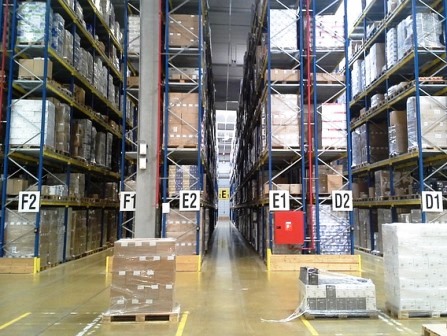By STEWART WOLPIN
Source: www.twice.com, April 2023
Consumer technology distributors report that business conditions seem to be returning to pre-pandemic conditions with some lessons learned – and maybe some new product categories
A return to normalcy. Back to business as usual. No news is good news. Nothing to see here.
After three years of Covid-caused factory and retail store closings, chip shortages, and supply chain disruptions, distributors of consumer technology products report business is slowly returning to pre-pandemic conditions, and look forward to a robust 2023. In other words, the state-of-the distribution business is solid once again.
“We’re getting back to the fundamentals and the basics of the business, the blocking and tackling,” agrees Trevor May, VP of consumer sales & vendor management for D&H Distributing, a 105-year-old, family-held and ESOP distributor of IT and electronics, “that’s becoming more normalized than it was during the pandemic itself when we were thrown into an unprecedented time period in terms of supply chain and the demand cycle. We’re getting back to a normalized situation that looks much more like pre-pandemic.”
“Everybody’s just trying to make sure they focus on the back-to-business fundamentals,” echoes John Yodzis, president and CEO of Dow Technologies, a Tampa, Florida, custom install and after-market auto electronics distributor, “not relying just on a spike of COVID business, really getting back to the fundamentals of what made the CI distribution business what it is and what it was.”
From Tragedy to Triumph
But business isn’t back to normal, necessarily. The pandemic left behind an array of business scars. But distributors TWICE spoke to report they were able to transform the disaster of the pandemic into an opportunity to become stronger and more responsive to their vendors and customers; in other words, what didn’t kill distributors made them stronger.

“The pandemic taught us many lessons,” concedes Dylan Leach, SVP of Product Management for New Age Electronics. “And while some of those might not be as critical in the current environment, they are still useful. For example, we quickly became experts in virtual training and events. While we have pivoted to more face-to-face engagements, the opportunity to use the virtual option provides more inclusivity and a chance to reach a larger audience. The ability to collaborate with stakeholders no matter their physical location is something that has changed the game and allows us to move so much quicker.”While virtual connecting helped solve immediate pandemic communication problems, video calling has become a permanent part of the business communication landscape. But relying on Zoom gave distributors a new appreciation for good old-fashioned in-person glad-handing.

“Our customers as well as probably end users are eager for that face-to-face contact again,” Dow’s Yodzis enthuses. “There’s so much being done virtually that you kind of lost some of that relationship. I think it’s great to be out there visiting our customers again. Using the virtual aspect, that’s really cool. Blending the two together – it can’t be all one way or the other. I think blending the flexibility of how you go to market with your customers is a really cool outcome.”
“All the [pre-pandemic] engagements are back on the calendars again,” adds D&H’s May. “Companies are investing in these engagements, and they obviously value these things. They’re not inexpensive investments to bring people together. But it’s happening, and they’re doing it, and to great success.”
Solving Lingering Inventory and Supply Chain Issues
While the distribution business seems to be returning to a near pre-pandemic state of operational affairs, there are still spotty supply chain issues, depending on the products being distributed.
“Most of the portfolio we offer is fairly reliable now,” New Age’s Leach reports. “For example, traditional PCs and tablets have returned to normal lead times. Extended lead times remain for console and PC gaming, but we have seen significant improvement as of late. As for our portfolio, delays are most acute in certain sub-segments rather than complete categories. Some high-end networking and gaming components struggle to keep up with demand.”
Roller coaster supply chain issues not only delayed the delivery of many products but also contributed to inventory glut by retailers trying to compensate. “It was just your classic Slinky effect,” Yodzis quips. “There was so much demand, and then obviously that backlogged the supply of raw goods. Closures in Asia put even more of a constraint on that. But you’re starting to see that the demand is not where it was, but the supply is now rolling in, and hence, leads to some of that glut in inventory.”

“The majority of that has really been corrected,” May insists. “We’ve seen a lot of partners take direct action to alleviate gluts of inventory and get back to a more normalized state of business for themselves. Now it’s just a matter of consumer demand and where they’re at in the upgrade and repurchase cycle of all those products they purchased in such a dense period of time.”
2023 Forecast
During the pandemic, sales of home office and home entertainment tech hockey-sticked as employees cloistered in their own castles for both work and play for the pandemic duration. So what products do distributors see that are poised to carry the industry forward through the rest of the year? With most traditional and stalwart product categories suffering down sales years in 2022, maybe the key products for future success are not what you expect.
“We have seen increased demand for return-to-office technologies – commercial grade – around shared meeting space and office infrastructure,” Leach recounts. “Many organizations need to update office technology that was put on the back burner while employees were fully remote. Now, as people return to office as part of hybrid schedules, the technology has to be refreshed to support the demands of the business.”
“We still see strong demand in the gaming industry and those products that support the gaming industry, whether that be the laptops, desktop monitors, video cards, etc.,” May testifies. “We see the emergence of virtual reality coming around as well. VR’s been a slow burn, but it’s under development and doing well, and I’m excited to see what that brings to the industry. We see a lot of improvement in those technologies. I suspect the software will continue to develop, which always drives the hardware that continues to come along and expands. I think you’ll see rapid changes in the hardware and the consumer adoption – at least that’s my hope.”
The seemingly rapid adoption of electric cars also could open up a new category for consumer technology distributors and retailers: EV chargers, currently more of a custom-installed product.
“There’s definitely over-the-counter possibilities in retail for products like that,” Yodzis’ contends. “[EVs are] such emerging market space that people aren’t as confident, don’t really know. They’re looking for a source of knowledge, whether that be retail, be it a professional installer, or whatever that is. [Consumers are] going to want more and more information on [chargers] as they become more and more readily available.”
But, “nobody really has that crystal ball,” Yodzis admits. “Focusing on those fundamentals is key for us,” a welcome change from what distributors have had to focus on for the last three years.

